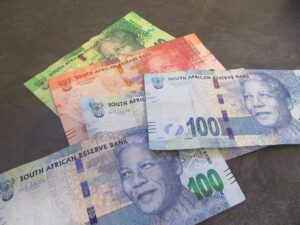
The past week’s news events have once again highlighted the rand’s vulnerability to international and local instability.
The rand hit a new all-time low against the dollar this past week following allegations that South Africa supplied weapons to Russia. The rand has been taking a battering due to the ongoing load shedding, the Budget Speech, the country’s greylist status and uncertainty about economic and political policy.
The rand’s value against other major currencies has attracted considerable attention recently, highlighting its volatility and vulnerability to the market. There are several factors that affect the rand’s exchange rate.
“Political and economic uncertainty has had a major influence on the rand in the past 10 years and resulted in the currency seeing a real seesaw. These events can also lead to a lack of foreign investment, which in turn results in the rand seesawing,” says Thys van Zyl, head of product development at Everest Wealth.
The rand is known for reacting to international events and developments in the American financial market have already had a major influence on the currency this year.
The country’s trade balance also affects the rand’s exchange rate. A significant trade deficit can put pressure on a country’s currency. If a country imports more goods and services than it exports, there is a greater demand for foreign currencies which leads to depreciation of the domestic currency. In the past ten years, South Africa has experienced several trade deficits, which has put pressure on the rand.”
South Africa is a major exporter of commodities such as gold, platinum and coal. The rand’s value is also affected by the change in international commodity prices. “If commodity prices fall, this could negatively affect South Africa’s export earnings, trade balance and the overall value of the rand.”
Announcements by central banks and monetary policy decisions also have an influence on a country’s currency. “If a central bank follows a policy that increases the money supply or lowers the interest rate, it can cause the currency to weaken. Both of these factors can affect the rand’s value relative to other currencies.”
This is how the rand has performed against some of the world’s largest currencies over the past ten years:

